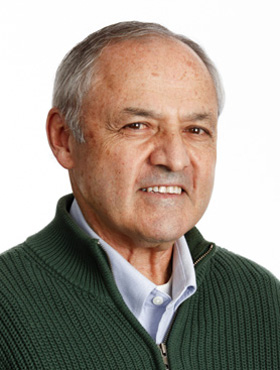
Cancers are heterogeneous.
That short sentence explains a lot about why cancers are so difficult to treat. It means that cancers are not the same—between types of cancers, between cancers in different individuals, even between cancer cells within the same person.
So how do you figure out what's different between cancers so you can develop new therapies in the face of those differences? Experiments can't be done ethically within the patients, who need the best available treatment, and fast. Using human cancer cell lines helps, but the crucial interplay between the cancers and their host environments is absent. Animal models also help, but cancers in research animals such as mice are different from those in humans.
Enter the NSG mouse, developed by Jackson Laboratory Professor Leonard Shultz, Ph.D. NSG mice have impaired immune systems, so they can accept and grow human cancer cells like those grown in glass dishes. But the cells can be studied within a living system, better modeling the patient environment.
Take recent research into T cell acute lymphoblastic leukemia, an aggressive blood cancer. Scientists discovered mutations that activate a particular gene, NOTCH1, that can play a key role in the disease. It followed, therefore, that inhibiting it should stop the disease, which it does. Briefly. Clinical tests of inhibitors showed that the response was much more transient than hoped, indicating that at least some cancer cells had escaped the treatment. But how? Researchers couldn't investigate further within the human patients, so one group turned to cell line investigations to learn more about what was happening in the patients' cancer cells. They then worked with NSG mice to test what they had learned, and the results are encouraging.
A paper published in Nature Genetics March 2, titled "An epigenetic mechanism of resistance to targeted therapy in T cell acute lymphoblastic leukemia," shows their findings. The group, led by scientists at Harvard Medical School and including Shultz, found a small population of leukemia cells that survive treatment, which they called "persister" cells. Apparently persister cells don't need NOTCH1 to proliferate, relying instead on a different mechanism. But when the inhibitor was removed, they were quickly able to express genes in the NOTCH1 pathway, showing that the difference is not in the DNA sequence itself. Instead, it's epigenetic, meaning that chemical modifications are made to the DNA rather than to the DNA sequence itself, as in genetic mutations.
Essentially, persister cells, which make up well under 10 percent of the total cell population, survive NOTCH1 inhibition because they use epigenetic adjustments. But what if their ability to make epigenetic changes was also shut down?
After identifying the likely mechanism through which persister cells make their epigenetic modifications, the researchers theorized that a treatment that combines inhibition of both NOTCH1 and the epigenetic changes might improve outcomes.
Using NSG mice implanted with human patient leukemia cells to test their idea, the researchers confirmed that the combination therapy is far more effective than either inhibitor administered alone.
Given that drug resistance remains a major challenge in cancer treatment overall, the findings provide important insight into an epigenetic mechanism for resistance and how it might be overcome. Using the NSG mouse for confirmation is a vital step to bringing a more effective combination therapy to the clinic for the benefit of leukemia patients.
Reference:
Knoechel B et al. 2014. An epigenetic mechanism of resistance to targeted therapy in T cell acute lymphoblastic leukemia. Nature Genetics doi:10.1038/ng.2913